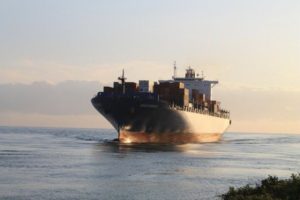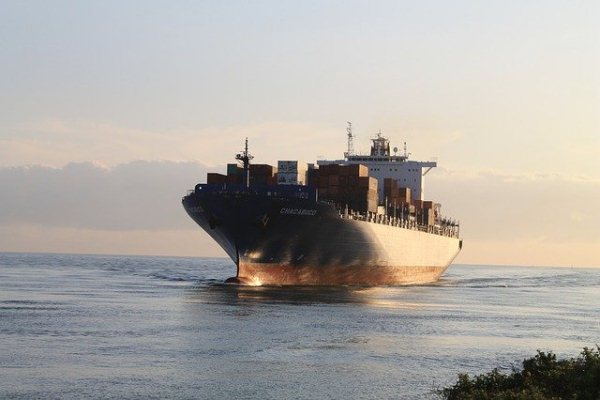 The final quarter of 2019 marked a big spike in the sale of low-sulfur fuel oil (LSFO), as implementation of the mandatory IMO 2020 sulfur cap loomed, according to a new analysis from the Baltic and International Maritime Council (BIMCO).
The final quarter of 2019 marked a big spike in the sale of low-sulfur fuel oil (LSFO), as implementation of the mandatory IMO 2020 sulfur cap loomed, according to a new analysis from the Baltic and International Maritime Council (BIMCO).
While high-sulfur fuel oil (HSFO) sales dove, demand for and cost of low-sulfur fuels spiked in the fourth quarter of 2019, the eve of enforcement of the International Maritime Organization’s (IMO) sulfur limit, placing major pressures on shipowners overnight, said the analysis released last week.
In Singapore, the world’s largest bunkering hub, the sale of HSFO dropped tremendously in a matter of months while the sale of low-sulfur fuels skyrocketed in the final quarter.
Preliminary estimates from The Maritime and Port Authority of Singapore indicate that a total of 4,465,000 tonnes were sold in December 2019, a 4% increase compared to December 2018 and the highest sale of bunker fuel sold in Singapore since January 2018. Sales of low-sulfur fuels, including LSFO and marine gasoil (MGO LS), rose by 51% month-on-month in December to 3,127,000 tonnes, compared to the 1,271,000 tonnes of HSFO sold in the same month.
“The shipping industry has been riddled with market uncertainty in recent months, but the bunker sales in the port of Singapore provide one of the first readings as to how the industry has transitioned into compliance with the IMO2020 regulation,” said BIMCO’s chief shipping analyst Peter Sand.
“We have now surpassed the first wave of IMO2020 and hopefully the accompanying market uncertainty will diminish as we proceed into 2020,” he continued.
In December, a total of 2,630,000 tonnes of LSFO were sold, accounting for 59% of total sales. “This is a massive change considering that LFSO accounted for roughly 1% of total sales in the last couple of years. However, total 2019 bunker sales in Singapore were down 4% year-on-year, the lowest level since 2015,” said the report.
From a mere 8% of total sales at the start of 2019, sale of low-sulfur fuels jumped to 70% in December, illustrating the first wave of IMO 2020. But BIMCO does not necessarily expect the low-sulfur to high-sulfur sales ratio to remain at these levels in the coming year.
“While low-sulphur fuels have gained the largest market share, it is worth noticing how HSFO still accounts for 28% of total sales, driven by bunkers purchased for scrubber-fitted ships. Many of the scrubber-fitted ships are also the largest types of ships consuming relatively more fuel, which will surely facilitate stable demand for HSFO,” said the report.
The shift in bunker sales underlines the massive transition that the shipping industry has been faced with at the turn of the decade. Whereas bunker suppliers began their IMO 2020 transition in the third quarter of 2019, many shipowners waited until the last minute to transit.
“The late transition has seemingly allowed shipowners to benefit from the declining HSFO prices in recent months, while also burning off the remaining HSFO left in the tanks,” BIMCO noted.
The low-sulfur to high-sulfur spread widened towards record-breaking territory around the implementation deadline of IMO 2020, driven by rising low-sulfur fuel prices.
“However, two weeks into the new year the spread has started to narrow slightly, which could indicate that the global fleet has bunkered sufficiently for the first wave of the transition, as also evidenced by the bunker sales in Singapore,” said the report.
“A second wave will surely set into motion once the fleet has burned through the initial supply of low-sulphur fuels. Whether the spread will follow along the same lines and widen at that point remains uncertain, but it seems likely that the spread might narrow in the coming months, as the fog of IMO2020 uncertainty clears,” said BIMCO.
“The rising cost of low-sulphur fuels illustrates the massive challenge that shipowners have been faced with overnight. At current price spreads, fuel oil costs have effectively doubled, putting heavy financial pressure on companies that must bear the cost burden themselves. The first-mover advantage associated with scrubbers seems to hold true for the time being,” it further said.
“Almost from one day to another, IMO2020 has resulted in a massive increase in bunkering costs for shipowners and operators, costs which for many companies cannot be sustained for a prolonged period. Shipowners are trying to pass on the additional costs of bunkering to customers, but if the underlying supply and demand fundamentals are not balanced, their efforts may prove futile,” said Sand.
As this developed, another crucial part of the regulation is approaching hastily. On March 1, 2020, the HSFO carriage ban takes effect, which prohibits ships without an exhaust gas cleaning system (scrubber) to even carry bunker fuels with sulfur content above 0.50%.
Image by PublicDomainPictures from Pixabay





